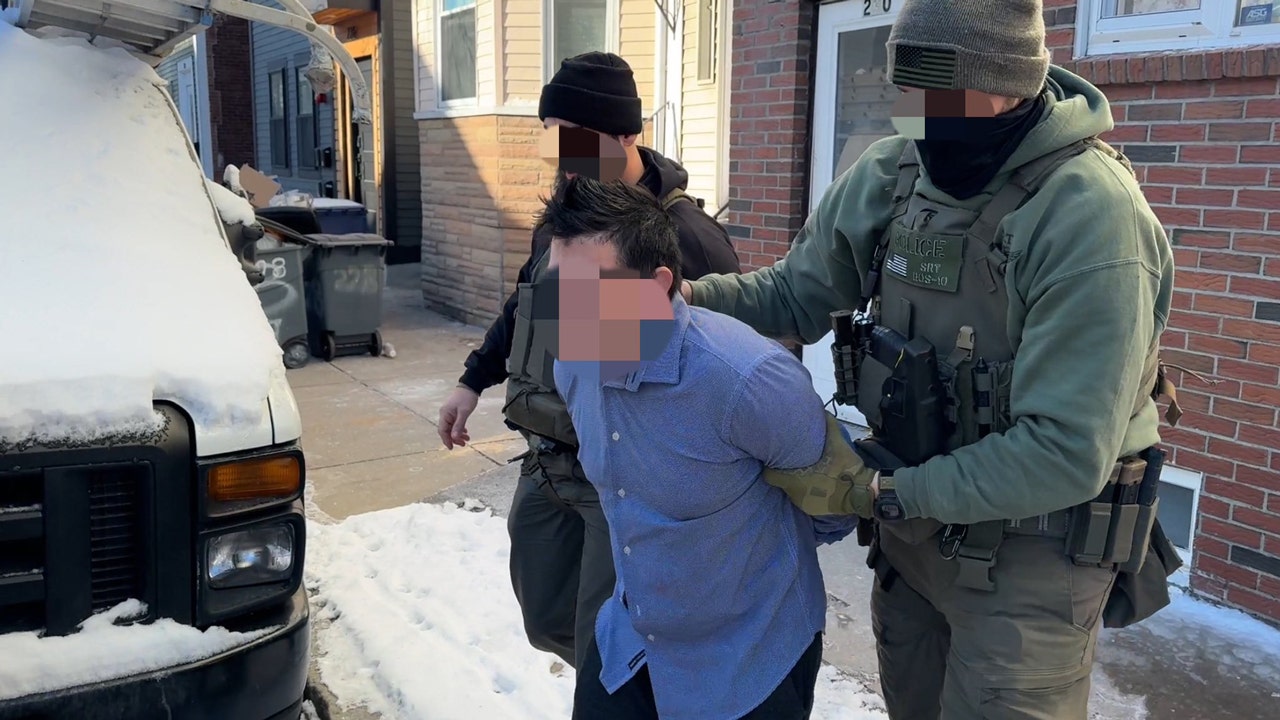Soldiers fight in freezing, muddy trenches bombarded by artillery, or in warrens of burned and blown-up houses in urban combat. Casualty rates are high, and dangerous missions, like storming enemy-held tree lines, abound.
As they planned for a renewal of Ukraine’s military under extreme conditions, both the country’s former top commander and his replacement have emphasized the same looming problem: a need to relieve exhausted, battered troops whose combat tours have stretched nearly two years.
In a tumultuous week for Ukraine’s war effort, President Volodymyr Zelensky removed his commanding general, Gen. Valery Zaluzhny, on Thursday, while aid from the country’s largest source of weapons and ammunition, the United States, hung in doubt in Congress.
While Ukraine relies on allies for weaponry, replenishing the ranks is a domestic challenge. Small protests have broken out in opposition to a Parliament proposal to expand the draft to include younger men, but so far, lawmakers have slow-walked the measure.
Military analysts have mostly coalesced around the idea that Ukraine will, at best, hold existing front lines in ground fighting this year with a new influx of American weaponry — and risk falling back without it. It plans to replenish its ranks through mobilization while keeping Russia off balance with long-range drone strikes and sabotage operations behind enemy lines and inside Russia.
In announcing the appointment of Gen. Oleksandr Syrsky to command the military, Mr. Zelensky said he wanted a “new management team” for the armed forces. He has signaled a search for a new strategy that accounts for exhausted frontline soldiers in Ukraine’s million-man army, which is fighting the largest war in Europe since World War II.
He suggested a partial fix by cycling more soldiers from positions in the rear into combat, but he also signaled “a new approach to mobilization and recruitment,” without elaborating.
Mobilization had been a factor in General Zaluzhny’s dismissal. The plans for calling up more soldiers to fight in grim trench warfare was something nobody in Ukraine’s military or civilian leadership wanted to be associated with. General Zaluzhny and Mr. Zelensky had been in open, public disagreement over mobilization since December.
Mr. Zelensky, at a news conference in December, said General Zaluzhny’s staff had asked to draft 450,000 to 500,000 men, a comment that appeared intended to shift responsibility to the military for a decision to draft so many more soldiers, opposition politicians said.
General Zaluzhny responded that the decision to call up more soldiers was not up to the military. He said the armed forces had prepared estimates of their manpower needs to allow for rotations of those serving now, replace soldiers killed or wounded in combat and anticipate future losses.
“We need shells, weapons and people,” General Zaluzhny said. “Everything else is done by the bodies that have the authority.”
In a statement after his appointment on Thursday, General Syrsky listed among his priorities “the life and health of servicemen,” and said the military would seek a “balance” for units between frontline deployments and training.
On this extraordinarily delicate issue for Ukraine, “the unity is gone,” Iryna Friz, a member of Parliament with the opposition European Solidarity party, said in an interview. “The question of mobilization was sabotaged for politics.”
The bill on mobilization has passed a first reading in Ukraine’s Parliament. It would lower the conscription age to 25 from 27 and stiffen penalties on draft dodgers.
Ukraine currently drafts men between the ages of 27 and 60. Under martial law, all men 18 to 60 are prohibited from leaving the country, lest a decision be taken to draft them.
Men with three or more children are exempted, but men with three children or fewer who volunteered, or whose families expanded as they served, have not been permitted to leave the military.
The bill in Parliament also allows for the demobilization of troops after three years of service, holding out the prospect of a reprieve about a year from now for soldiers who have been fighting since the invasion in 2022. The law is expected to pass this month and take effect in March, Yaroslav Zhelezniak, a member of the opposition Holos party, wrote on Telegram.
For draft-eligible men, trench warfare is a harrowing prospect. Soldiers die from artillery, exploding drones and snipers, as well as in close-quarters combat with Russian forces. Russia’s ubiquitous land mines have blown legs or feet off thousands of Ukrainian men. And bunkers where soldiers slept last winter were overrun by rodents drawn to the warmth of the log or rough timber structures, worsening the unpleasant conditions on the front.
Soldiers on the front typically spend three days or so sleeping in shifts in trenches and bunkers under fire, followed by three days in less-risky reserve positions, such as abandoned houses in nearby villages.
Ms. Friz, the lawmaker, said Ukraine’s government and Parliament must design the draft to balance the needs of the army and the economy and to maintain political stability, all issues beyond the scope of the military’s duties.
Lowering the draft age, for example, would bring more lithe, healthy soldiers to the fight, but poses long-term risks for sustaining Ukraine’s population given the country’s demographics.
As in most former Soviet states, Ukraine has a small generation of 20-year-olds because birthrates plummeted during the deep economic depression of the 1990s. Because of this demographic trough, there are now three times as many men in their 40s as in their 20s in Ukraine.
Drafting more men in their 20s, given the likely battle casualties, would risk reducing the number of births in this small generation of Ukrainians, resulting in declines of draft- and working-age men decades from now and endangering the country’s future security and economy.
In one move to ease the concerns of men who are called up but want to have children, Parliament is considering a bill to pay medical bills for soldiers who wish to freeze their sperm to allow partners to become pregnant if they die in combat.
Ukraine’s labor pool is already vastly diminished by women fleeing war and men joining the army.
A crowd angry about the draft blocked a road outside a western Ukrainian village last week in a rowdy confrontation with drivers and the police that illustrated the political risks of expanding mobilization.
Villages in the west have been a primary source of soldiers for the Ukrainian army, and support for the war has been higher in the country’s west than overall in Ukraine. But the loss of male loved ones has taken a toll on many families.
The roadblock took place on Tuesday in the village of Kosmach, in the Ivano-Frankivsk region, and began with unfounded rumors in local chat groups that draft officials were coming to find the village’s remaining men, the police said in a statement. About 100 women blocked a road, and the protest turned violent when they mistook a woman from a neighboring village for a draft official, police officers said.
The woman, Ivanna Vandzhurak, wrote on Facebook that the crowd had yelled that she was a “spotter” for the local military recruitment office. The accusation echoed widespread worry in Ukrainian society that spies in their midst, known as spotters, are helping Russia identify missile targets, but in this case, the source of the anxiety was the military recruitment system.
Dmytro Mokhnachuk, the chairman of a council that governs the village and nearby communities, told local news media that the women agreed to disperse but told him they were “fighting against draft office employees.”
Maria Varenikova contributed reporting.





